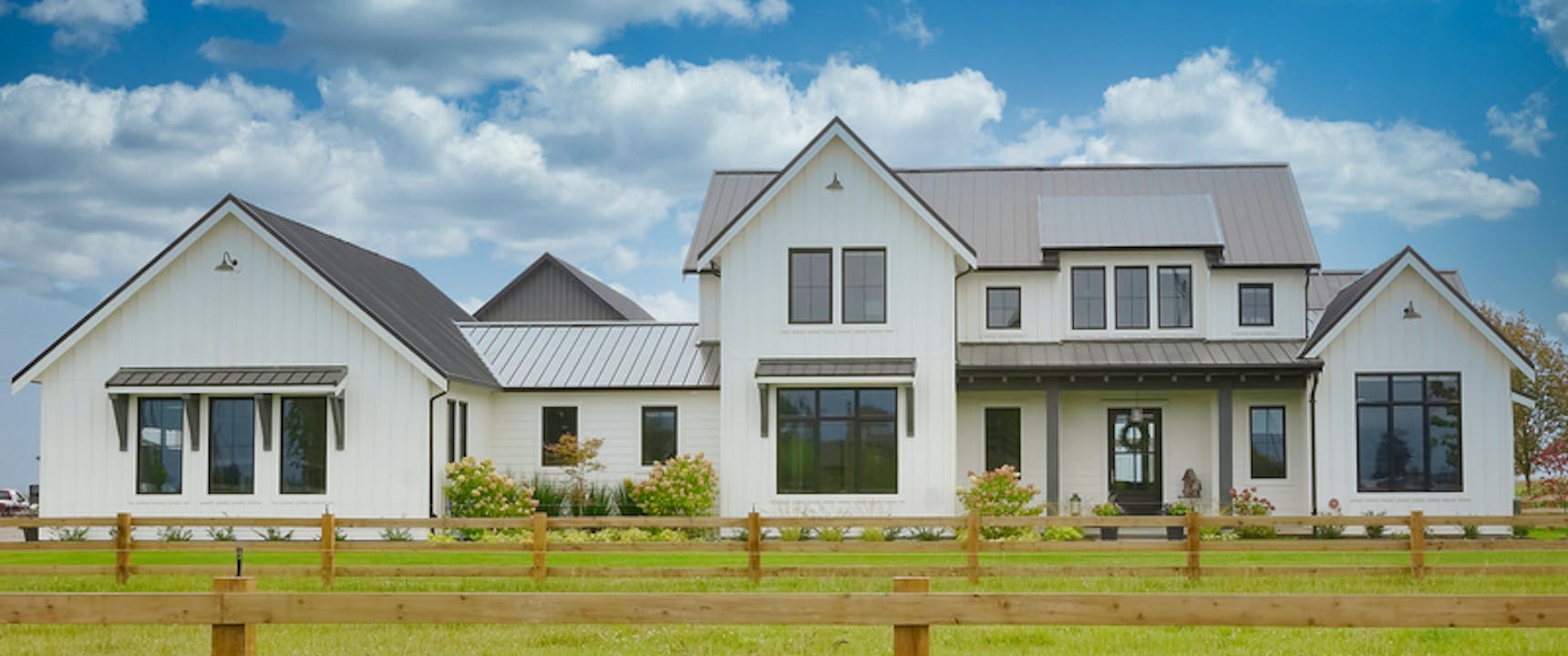Everything You Need to Know About Board And Batten Siding
By
Storm Guard
If you’re looking into a fresh look for your home, you’ve probably stumbled across board and batten siding. It’s traditional yet modern look is appealing to homeowners all over the country.

In this guide you’ll learn:
- What you need to know about board and batten siding?
- What is board and batten siding made of?
- How much is board and batten siding?
What is board and batten siding?
When you’re considering different siding options, going with something that is traditional and trendy is a happy medium. As with any type of choice you make with your home, there are pros and cons.
What is it?
Board and batten siding is a type of exterior siding that has alternating wide boards and narrow wooden strips, called “battens.” The boards are usually one foot wide, but that is not a requirement.
The boards are often placed horizontally or vertically. The battens are typically 1/2 inch wide, but, again, that is not a requirement.
Is it a new style?
Using this style of siding is trendy, but it’s not a brand new style of architecture. In fact, board and batten style of siding was extremely popular in the Victorian Era.
Historically, board and batten has been used on the exterior of barns and other buildings dating back as far as the 19th century. Because of this, “barn siding” is a common name for this style.
What Is Board And Batten Siding Made Of?
Fiber Cement
Fiber cement is a great choice for board and batten siding! It is very strong, versatile, long-lasting. Fiber cement is weather, fire, and heat resistant.
Additionally, it can be designed to look like almost any other kind of material, even wood. As far as cost, fiber cement is also relatively cheap to install, compared to wood or steel.
Wood
Wood siding is can be a good option for board and batten siding. If you want that natural, rustic look, wood is going to be the best choice of siding for you. Wood siding looks great, but it does have some cons. Disease, rot, and decay can occur if moisture finds itself inside. Because it’s wood, termites can also persist.
Steel
Steel siding is incredibly durable, but it is much more costly than other options. Just like fiber cement, steel board and batten siding can be styled to look like different types of wood and different colors. Storm damage isn’t too much of a concern against durable steel. Note: Metal roofs are also on the rise.
Vinyl
If cost is the most important factor, vinyl is the best choice for your new exterior. Another great selling point of vinyl is that it is insect and disease-proof. Although not as durable as steel or fiber cement, vinyl siding is relatively durable. The biggest downside is the lack of rustic aesthetics.
How Much Is Board and Batten Siding?
The cost can vary greatly due to factors such as labor and product availability. We’re using historic averages for the following figures, and these should be considered extremely rough estimates.
- Fiber cement siding is a bit cheaper, coming in at anywhere from 75 cents to 5 dollars per square foot. That would make a 2,000 square foot home cost between $1,500 to $10,000.
- Wood siding will cost between $2 to $3 per square foot. That would make a 2,000 square foot home cost $4,000 to $6,000.
- Steel board and batten siding can be installed for around $3 to $5 per square feet. A 2,000 square foot home would run between $6,000 to $10,000.
- For vinyl material, you will typically see a board and batten siding cost of anywhere between $2 and $7 per square foot. For a 2,000 square foot home, that brings the cost to $4,000 to $14,000.
Now that you’ve read the pros and cons of board and batten siding, if you’re wanting to get a personalized quote to make your home the talk of the town, contact your local Storm Guard today!

